News
Rapid Deploy Use-Case: Ship-to-Shore WiFi
Rapid Deploy Use-Case:
Ship-to-Shore Wi-Fi
Outdoor rail and intermodal terminals present complex, ever-changing conditions when deploying and maintaining wireless network infrastructure. But marine terminals take those challenges to an entirely new level, exposing infrastructure to corrosive elements and raising the bar for wireless connectivity between massive shipping vessels and on-shore operations.
Even with these added difficulties, marine terminals still face pressure to keep shipped goods moving, on time, on track, and reliably delivered for both carriers and shippers. To meet these customer expectations and create an operational advantage in an increasingly competitive market, one shipping and logistics customer approached Buckeye Mountain about partnering on a unique ship-to-shore WiFi project that would provide consistent, seamless connectivity for a marine terminal and customer ships docked in its San Juan, Puerto Rico port.
“They had already tried cellular,” says Steve Hill, a consultant for Buckeye Mountain. “One provider put in cellular-based access points as a connectivity solution for its customers. But those failed miserably. After that, Buckeye Mountain was given the opportunity to deliver a solution.”
Steve Hill, Director Wireless Engineering
Read on to learn how Buckeye Mountain partnered with the marine terminal to design and launch a successful, innovative ship-to-shore WiFi solution.
The Problem: Ensuring consistent WiFi connectivity across a complicated marine environment
Marine terminal environments are always in motion: ships are moving in and out, cranes are loading and unloading containers, and container stacks create constant change to the terminal yard landscape.
These dynamics create significant challenges when planning and implementing wireless infrastructure. Reallocated container stacks can interrupt wireless signals, creating spots all over the yard where a lost connection can disrupt operations. Ships, meanwhile, can struggle to secure a reliable connection as they enter the port. Even when a signal does reach the ship, the connection may only be available in certain locations—and moving containers and cranes in the yard can disrupt that connection at any moment.
Initially, the customer—a shipping and logistics operator—tried to address these connectivity issues by installing cellular access points in its terminal crane offices in Puerto Rico. When that failed, they needed to quickly find and deploy an alternative connectivity solution.
“The terminal was using a lot of handheld devices to scan containers as they came off the ship,” says Hill. “Cellular wasn’t working. The handheld scanners kept dropping connections, which threw a wrench into the whole terminal’s operations. It wasn’t sustainable.”
Steve Hill, Director Wireless Engineering
During a site visit to evaluate the terminal environment, Buckeye Mountain’s experts identified a number of unique challenges to address through its solution design process, beginning with the unreliable power and wireless infrastructure in Puerto Rico—both of which had contributed to the failures of past connectivity solutions.
Meanwhile, the high temperatures and high salt content of the air created highly corrosive conditions that meant certain materials couldn’t be used when deploying wireless infrastructure.
“When you have multiple metals like stainless steel and aluminum and regular steel, if you don’t have the right metals connecting to the right metals, things corrode very, very quickly,” Hill says. “Within six months, something completely rusts off. Once we got there and we saw so much corrosion everywhere, we took some time to think it through.”
Delivering Short-term WiFi Connectivity and Lasting Infrastructure
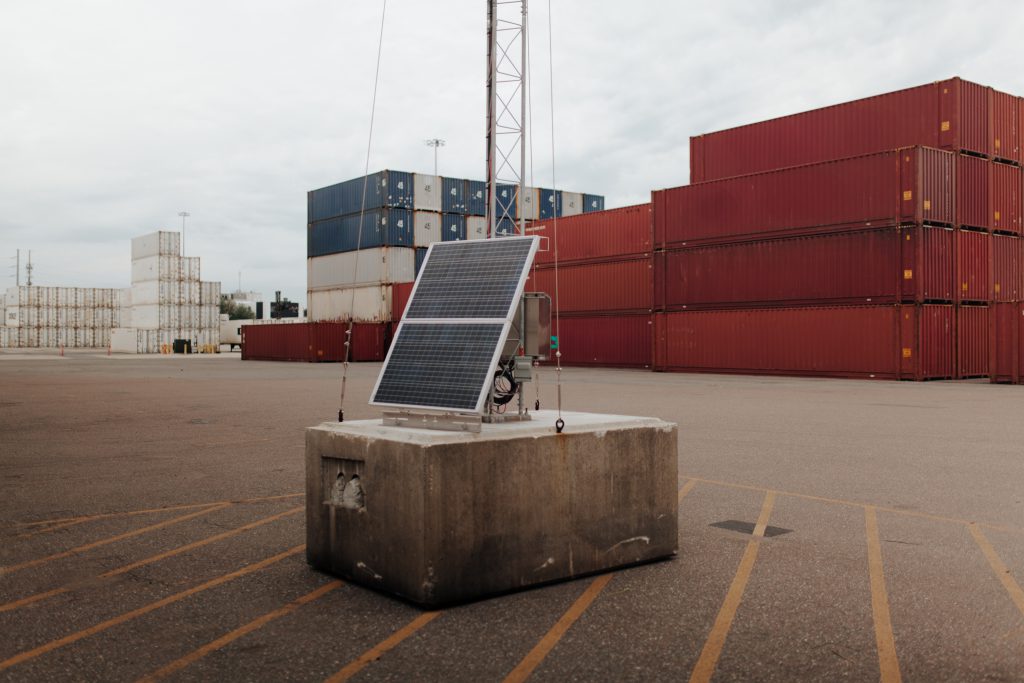
This customer needed a fast solution to its urgent connectivity challenges. That’s exactly what our on-the-ground experts delivered: Within 48 to 72 hours, Buckeye’s team had core connectivity equipment installed and up and running, implementing Rapid Deploy technology to deliver a stable WiFi network covering the dock and nearby areas.
“Most of that was Rapid MiniMaxes,” says Hill. “We identified vertical assets like poles—including some telephone poles that had been broken off from previous hurricanes—where we were able to install solar panels and other equipment. It was really an engineer-as-you-go kind of environment—but a lot of that initial network still stands today, six years later.”
While that initial 72-hour project addressed the customer’s most urgent connectivity needs, the shipping and logistics company still wanted to partner with Buckeye on more long-term initiatives to improve its port operations. The first phase of these connectivity projects focused on targeted solution delivery based on the customer’s evolving needs, including expansions to its WiFi coverage area and upgraded infrastructure that could support HD video surveillance.
Eventually, the customer shifted its focus toward planning connectivity investments that could support the company’s future needs in its Puerto Rico terminal. Those efforts included implementing 60 GHz technology that offered better short-range performance, consistency, and security within the terminal yard.
“Even though 60 GHz is designed for fixed point‑to‑point connectivity, we installed a test link to a moving crane to see what you could expect when a crane is moving 20 miles an hour,” says Hill. “But it performed really well.”
Soon after the infrastructure for 60 GHz spectrum was installed, the customer approached Buckeye Mountain about setting up wireless connectivity for a new PBAM trailer in its terminal yard. Although the customer had initially planned on using trenched fiber-optic cable to connect the PBAM trailer to the rest of the yard, the high cost of that infrastructure project prompted the customer to see if wireless connectivity was an option.
“The purpose of the PBAM trailer was to perform all of the remote diagnostics and monitoring for the yard’s three dock cranes, and to then relay that traffic back to the manufacturer’s headquarters,” Hill says. “For that reason, the trailer needed very reliable, low-latency, high-speed connectivity.”
Buckeye turned to its new 60 GHz spectrum, installing 60 GHz radios that created direct paths to the marine operations building and terminal cranes. Those connections now form the backbone of a 7 Gbps ring around the port, replacing a slower and less secure 5 GHz backhaul.
“The air‑fiber ring is far more reliable and less vulnerable than buried fiber,” says Hill. “Unlike fiber cable, you can’t ‘cut’ the air.”
Reliable Ship-to-Shore WiFi, Built on a Carrier-Grade Backhaul Network
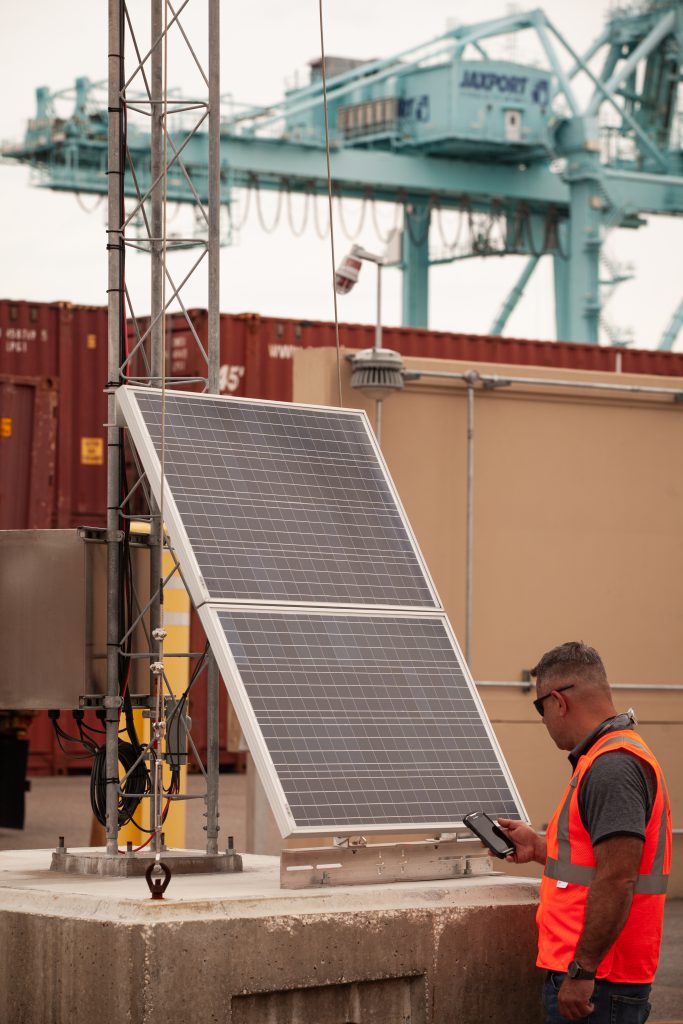
Buckeye Mountain’s value as a wireless connectivity provider is about much more than the technologies we implement. We also bring a proven methodology to up-front planning and solution design, leveraging path-loss calculations, interference studies, and site modeling to inform our site visits and ensure we’re set up to engineer an effective solution for our customers.
We take pride in offering a deep engineering bench of experts offering certified credentials and experience using top-tier predictive tools. As a result, we were able to provide this customer with accurate forecasting of the increased connection uptime and terminal throughput they could expect from our infrastructure deployment.
In the case of its Puerto Rico marine terminal, Buckeye Mountain guaranteed the customer “five nines” reliability—or 99.999 percent uptime.
“That equates to just a few minutes of allowable downtime per year, including things like software upgrades and equipment failures,” Hill says. “‘Five nines’ is considered the gold standard in reliability. It’s typically associated with carrier-grade, fiber-based networks. That’s the level of performance we’re aiming for when we design our networks.”
Steve Hill, Director Wireless Engineering
In any infrastructure delivery project, Buckeye Mountain’s default goal is creating multi-path, multi-radio redundancy across the network, ensuring uptime even when the facility suffers from equipment failures, environmental disturbances, or even extreme scenarios like lightning strikes and severe weather.
From an engineering and design perspective, uptime and throughput always come first,” says Hill. “Cost is a secondary consideration. If a customer pushes back on pricing, we explain why the network is designed the way it is—and what risks come with cutting corners.”
Hill also notes that many of Buckeye’s hardware solutions are patented or patent-pending, meaning their customers have exclusive access to innovative technologies. Buckeye’s relationship with other hardware manufacturers also provides an inside edge: in the case of this Puerto Rico terminal, Buckeye’s experts had early access to emerging 60 GHz solutions that allowed the customer to plan around these solutions and deploy them as soon as they were available – resulting in cutting-edge infrastructure that only Buckeye could provide.
As Your Connectivity Needs Evolve, You Can Count on Buckeye Mountain
Wireless technology is changing all the time. So are the connectivity needs of marine, rail, and intermodal terminals.
Your on-the-ground operations need wireless infrastructure that is fast, reliable, and flexible to change. That’s exactly what Buckeye Mountain offers—and it’s why we view each customer relationship as a long-term partnership built on trust, credibility, and service.
We’re invested in supporting your company’s success not only today, but years into the future. Whether you’re seeking immediate connectivity help, long-term infrastructure transformation, or both, we want to be your partner in navigating that change and maximizing performance across your yard.
Find out how Buckeye Mountain can design and deliver a custom solution to meet your most specialized connectivity needs.
Aligning Your Terminal’s Long-Term Strategic Goals with Daily Operations
Aligning Your Terminal’s Long-Term Strategic Goals with Daily Operations
For leaders at busy rail terminals, the resource requirements to keep operations moving often take priority over long-term strategic planning.
It’s easy to see why. With shipments coming and going, and inventory moving constantly —not to mention endless maintenance and repair tasks to keep equipment and infrastructure up and running—the big-picture thinking involved in strategic planning can seem irrelevant to the real work getting done on the ground.
Sticking to the status quo may not be a perfect strategy, but it gets the job done.
“Historically, the challenge has been, ‘Why fix something if it’s not broken?’” says David Fajardo, Manager of Field Technical Services at Buckeye Mountain.
But there’s a difference between “getting the job done” and “doing the job better than before.” Terminal operations may not be broken, but there’s plenty of room for improvement in rail yards and marine terminals that aren’t yet leaning on digital innovation to address pervasive issues affecting day-to-day performance.
Therein lies the importance of making space for long-term planning: While you may not see the impact of strategic thinking immediately, it can transform your operational capabilities in the near future. Successful, sustainable terminal operations require leadership to balance day-to-day responsibilities with strategy planning that is both achievable and impactful.
Think of it this way: If you continue to prioritize short-term needs over long-term goal-setting, you can expect those operational challenges to compound over time.
But striking a balance between today’s needs and tomorrow’s goals is easier said than done. That’s why we’ve created this guide to help you keep daily ops running while building toward an even more successful future.
The Operational Challenges Faced by Today’s Terminal Leaders
Operational innovation doesn’t happen overnight. It can take years to see the benefits of the strategic changes you implement tomorrow.
That long timeline underscores the importance of planning ahead. Effective digital transformation in the yard needs to be informed by the persistent challenges and limitations affecting terminal ops performance.
While every terminal is a unique environment, the operational challenges of these rail yards are often consistent from one location to the next. Here are some of the most common pain points familiar to today’s terminal leaders:
Achieving Buy-in for Strategic Initiatives Among Terminal Workers
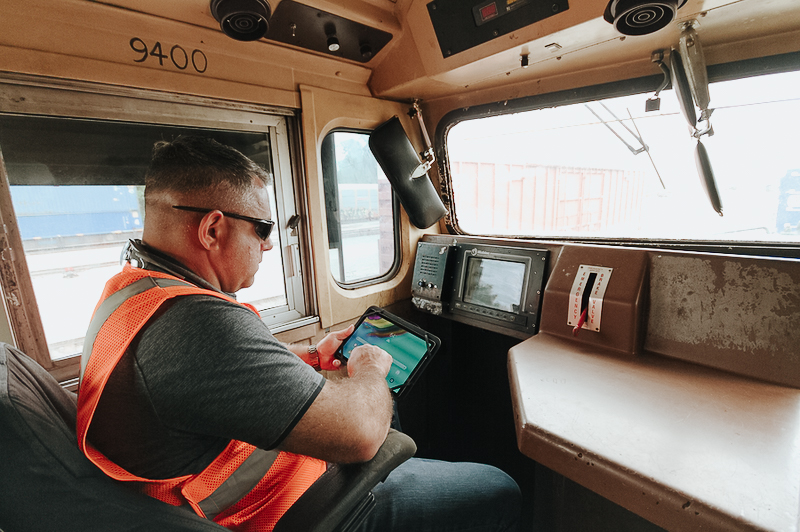
Any terminal’s operations workforce is going to display a wide range of reactions toward the prospect of digital transformation.
Some team members will immediately see the value of getting trained on new devices and software designed to help them do their jobs better. Others will need to have the benefits of this strategic shift shown to them—including its implications for their work responsibilities and the training and upskilling they will be asked to complete.
Even then, some workers may still be hesitant to embrace change—especially if a new strategic initiative is pushing them out of their comfort zone and disrupting work routines they have relied on for years.
Terminal leaders must understand that some operations personnel will need time to accept these changes. Proper education and training are some of the best ways to ensure that your workers can properly use this technology—and will, in turn, be able to experience the benefits first-hand.
“A lot of examples of automation in the terminal can make work much easier for your personnel,” says Fajardo. “A good example is one rail terminal where ops teams are operating cranes remotely from inside a building. Instead of climbing up a crane in the middle of winter with subzero wind chills, workers can now sit in a warm office while operating the crane. It’s a significant improvement for them.”
David Fajardo, Manager of Field Technical Services at Buckeye Mountain
Failing to Maximize the Value of Third-party Training and Support
If the terminal has attempted to control costs by limiting its investment into training and in-house support, it risks a number of complications that will increase operating costs, reduce productivity, and reinforce skepticism and resistance among your employees.
Improper use of devices, increased rates of device damage, and ongoing disruptions across the rail yard all increase the overall cost of your technology investments. While terminal leaders tend to view outsourced vendor support as another line item, it can actually help reduce costs in the long run while accelerating time-to-value and the long-term ROI of your new technology.
“There’s also the issue of competition in the vendor market,” says Fajardo. “Some leadership believe they can find cheaper vendor support options elsewhere. But what sets Buckeye Mountain apart is that we offer more than a device—we offer a complete package, including the devices and the ongoing support, to give our clients peace of mind that they’ll get the most out of their technology.”
Overcoming the Constraints of Workforce Attrition
Manual terminal operations are highly dependent on the institutional knowledge offered by an experienced workforce. But today’s rail yards are facing an increase in employee attrition, particularly among more experienced technicians and employees whose expertise is impossible to replace.
New hires may be able to fill those roles, but they’re unable to supply the specialized knowledge being lost through accelerating turnover. As a result, organizations reliant on manual operations bear the cost and inefficiency of onboarding new hires who require additional training but still can’t contribute the value of their predecessors.
A tech-enabled approach, by contrast, eliminates reliance on innate industry knowledge by equipping workers with specialized tools to perform or automate even specialized tasks.
Ensuring Smooth Daily Operations at Scale
At any given moment, terminal operations teams are juggling dozens of different shipments, tasks, and other priorities. A single oversight or delay can cause a chain reaction sending a ripple of disruption through the yard.
“A lot of rail terminals, for example, have these high-priority trains called ‘Z trains’ that need to depart ASAP,” says Fajardo. “These Z train operators are a big customer for a lot of railroads, and they pay a premium to get their trains loaded and out of the terminal.”
Beyond these high-priority tasks, though, operations teams and terminal management are constantly performing triage to assess new issues and demands placed on their facility, and to determine how resources should be reallocated as a result. Managing all these moving parts was never easy with pen and paper, but the increased volume and demand placed in rail terminals has made manual ops management unfeasible and unsustainable.
Automation and other tech-enabled efficiencies are critical to keeping the rail yard from spiraling into a chaotic mess spawning unnecessary errors, delays, and customer complaints.
The Strategic Goals Driving Terminal Leaders’ Long-term Planning
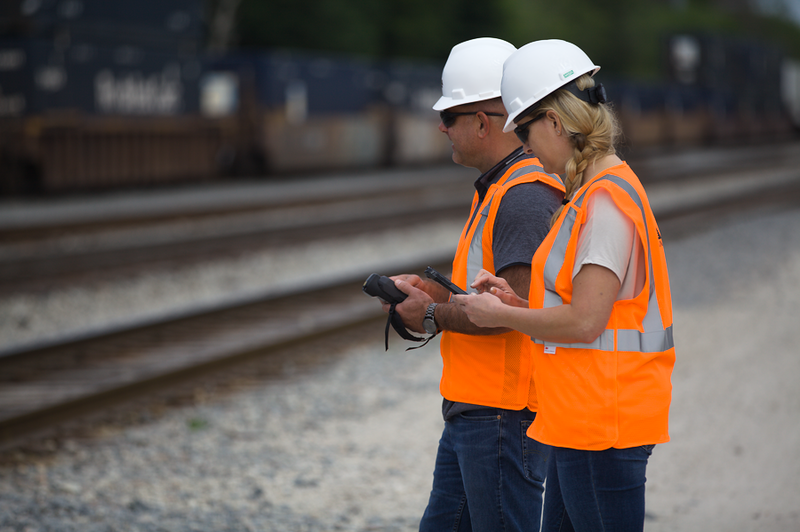
Terminal leadership is well aware of the cost, disruption, and frustration that comes with unsuccessful tech adoption in the rail yard. As a result, many approach strategic planning for future tech adoption by seeking out changes that will deliver the greatest positive impact for the terminal.
The end goal of tech adoption for terminal operations is to help those facilities run smarter and more efficiently—allowing the yard to increase productivity while reducing errors and related operational downtime.
Here are two specific strategic outcomes those leaders are often seeking:
Accelerating Operations through Automation
While digital tools and automation have transformed day-to-day operations across the supply chain industry, rail terminals have been a rare exception.
But it’s not that effective digital tools don’t exist. Instead, terminals continue to rely on manual, pen-and-paper processes because they’re familiar to workers and sufficient to keep operations moving.
Rather than endure the short-term inconvenience of transitioning to new technology that helps operations run more smoothly and efficiently, it’s all too common for terminal ops personnel to stick with a status quo that is inefficient, error-prone, and quickly becoming obsolete.
“Pen-and-paper processes naturally come with a degree of human error, among other limitations,” says Fajardo. “Transitioning to a more technology-driven environment can address these issues by improving efficiency, reducing mistakes, and increasing visibility.”
David Fajardo, Manager of Field Technical Services at Buckeye Mountain
Terminal leaders are well aware of the complex daily operations that must be managed across a single yard. Each process that is executed manually, rather than with the help of digital tools and automation, represents wasted time and an increased risk of error.
When you multiply this inefficiency across every manual task performed across your yard, your day-to-day operations will inevitably suffer from work delays, workflow bottlenecks, lower productivity, and reduced revenue potential.
Improving Visibility for all Terminal Operations
These companies want better visibility into what’s happening at the terminal level. But reliable data on what’s happening on the ground is difficult to gather when most of your terminal operations are being handled with pen and paper or outdated systems.
Even when that information is able to be collected, it takes time for manual information to be consolidated, organized, and delivered to key stakeholders. The long timeline for manual reporting means that by the time information on terminal operations is delivered to corporate leaders located hundreds of miles away, the data is already outdated.
These visibility challenges disappear in a tech-enabled terminal. The data available from endpoint devices and other terminal technology can inform a 360-degree view of daily operations. Information can be gathered and analyzed quickly—potentially in real-time—to support more responsive, effective management.
Over time, this data can power faster, more effective process optimization while helping terminal leaders identify new automation opportunities across daily ops.
Connecting the Dots: Aligning Long-term Strategic Goals with Boots-on-the-Ground Operations
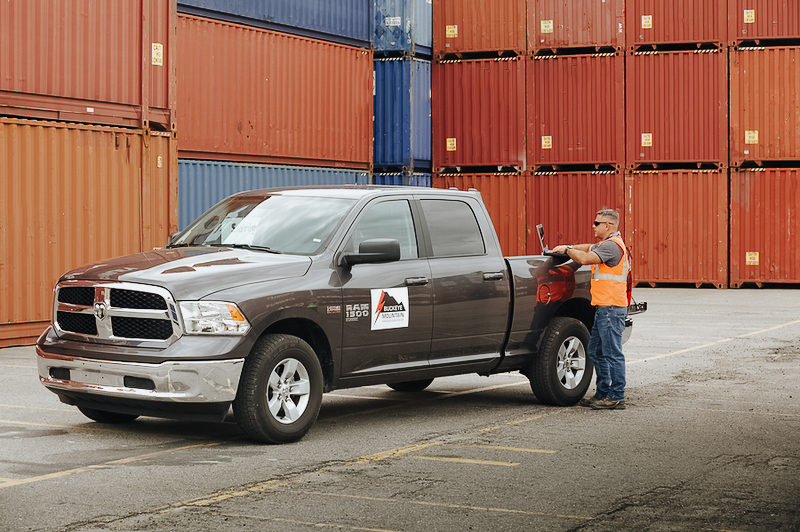
Day-to-day operational requirements are easy to define and straightforward to execute: technicians are deployed to address equipment needs, shipping containers are unloaded from an incoming ship or train, and assets are evaluated to ensure regulatory compliance.
As for long-term strategic planning? If you’re starting from scratch, a clean slate can be overwhelming. That’s why terminal leaders should start any strategy development process by identifying long-term goals that offer a clear benefit to your boots-on-the-ground operations.
By connecting these goals to their tangible impact in the rail yard, all stakeholders can approach strategic planning with a more tangible understanding of how these long-term changes will positively impact daily terminal ops.
Here’s how to achieve this:
1. Implement TechOps
After years of a slower tech adoption, the industry is now catching up. As a result, today’s terminals “are getting ‘tech-ified’ faster than their operations personnel can support them,” according to Ryan Swartz, Director, General Intermodal Innovation at Buckeye Mountain.
This fast rate of transformation is a potential risk to day-to-day operations, putting strategic initiatives at odds with the immediate needs of rail yards and their customers. Terminal leaders are often caught in the middle: while they may feel pressure to keep pace with the rapid innovation taking place at other rail yards, they may still be stinging from past tech adoptions gone wrong and may be wary of disruptive technological change being driven by strategic initiatives.
This friction between today’s needs and tomorrow’s ambitions is exactly why terminals need the support of a tech ops vendor. With remote support and a boots-on-the-ground presence for maintenance and other support, a tech ops partner can deliver the following operational impact:
- Complete freedom to acquire best-fit solutions. An ideal technology vendor is hardware agnostic, so you aren’t locked into choosing solutions from a limited list of hardware the vendor supports.
- 360-degree visibility across terminal operations. By consolidating hardware support with a single vendor, terminal leaders can easily manage resource allocation, streamline workflows, and coordinate support activities across the yard.
- Optimized asset utilization. At Buckeye we can expedite repairs, execute preventative maintenance, and proactively replace devices at the end of their lifespan to maximize equipment uptime and minimize disruptions to your operations.
- Enhanced efficiency across your operations workforce. Technicians and other personnel are equipped with the right tools and resources to do their jobs faster and better. Rates of human error are reduced, and daily operations become more productive thanks to streamlined, efficient workflows.
- The ability to adapt and scale your vendor support over time. As the role of technology in your terminal increases, a hardware-agnostic technology partner can scale with your support needs, providing a foundational relationship that will be there when you realize your long-term ambitions.
2. Invest in Full Lifecycle Management
The long-term value of your technology investments will be heavily influenced by how well you manage those devices over their lifecycles. It starts with making sure you’re choosing the best fit-for-purpose solutions for your yards and then securing the necessary support to maximize the lifespans and value of that technology.
But asset lifecycle management is both cost- and resource-intensive. As a result, too many terminal leaders try to get by without it—and end up suffering the results of that short-sighted decision.
One Class I railroad learned the hard way when it acquired 4,000 lower-cost Android tablets for train and engine employees across its rail network, only to realize that the devices were creating constant work disruptions that wouldn’t have existed with more expensive iPad tablets.
“It’s very hard to stay ahead of what actions need to be taken to keep operations running efficiently and evolving,” says Erica Toney, Southeast Operations Manager at Buckeye Mountain. “Devices, for example, all reach a point where their operating systems aren’t able to be upgraded, or where operational apps stop communicating with the operating system. These things can impact operations, but Buckeye really thrives in our ability to look to the future and stay ahead of those needs while maintaining operational success in the present.”
Erica Toney, Southeast Operations Manager at Buckeye Mountain
By offering cradle-to-grave management across the entire asset lifecycle, Buckeye Mountain helps you maximize the value of your technology every step of the way.
We help you procure the best-fit technologies for your operational needs and manage those investments from installation to their eventual replacement. And because we’re experts in lifecycle management, we’re able to anticipate and address potential issues with your technology before they disrupt terminal operations.
3. Consider Third-party Support and Training
An optimized approach to boots-on-the-ground operations starts with the right technology. But realizing this strategic vision requires more than picking out specialized hardware and software.
Employees need to be properly trained to use these solutions. Ongoing support will be necessary to troubleshoot issues and manage technology lifecycles.
Given the high up-front expense of new technology, terminal operators may prefer the reduced cost of a DIY approach. But handling all of this in-house can be incredibly risky to your strategic investments—and it can create additional work for technicians and other personnel at a time when they’re already stretched thin.
Ongoing third-party vendor support can help you minimize these risks, overcome common pitfalls in navigating digital transformation, and help your terminal achieve its long-term strategic goals—without compromising performance or continuity for your day-to-day operations.
How Buckeye can help with your Long-term Goals and Daily Operations
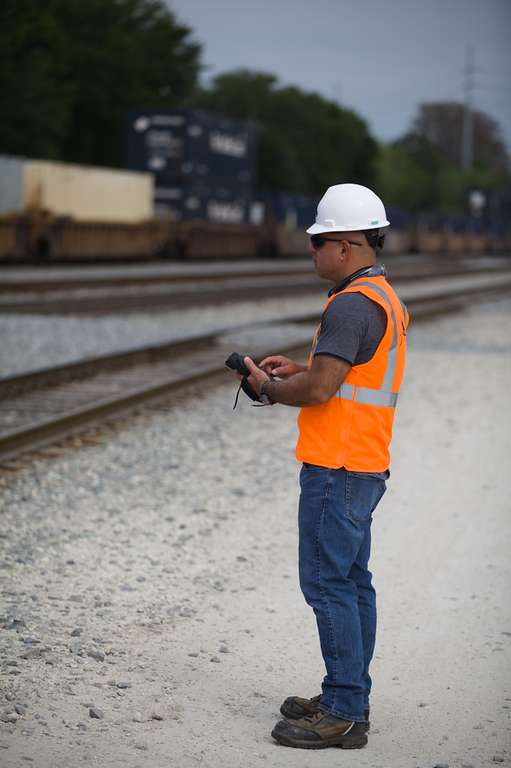
Every terminal has unique needs and goals guiding its technology investments. That’s why Buckeye Mountain tailors its technology implementations and ongoing support to each facility’s needs.
Whether you need tablets for on-site technicians and operations personnel, interactive self-service kiosks for incoming drivers, automated gate systems, rail portals, or any other technology designed for deployment in rugged terminal environments, we help supply, configure, install, and support those devices to make sure your investment is paying dividends for your daily operations.
“A lot of what we provide revolves around implementation,” says Fajardo. “Many of our terminals start with nothing—no gates, no portals, no technology in their trucks or cranes. We handle everything from start to finish. In many ways, we function as a turnkey solution and support desk for them. Without our involvement, they wouldn’t have been able to achieve the level of optimization they have today.”
Partner with Buckeye to Minimize Disruption to Your Yard
Outside vendor support ensures that all of your existing internal resources are available to support continuity in the yard. But Buckeye Mountain understands that long-term strategy execution can’t come at the expense of daily operations and your customers’ needs.
That’s why our services and support are designed to maximize equipment availability and minimize disruptions in your yard. We do this by managing everything remotely to stay physically out of terminal workers’ way. We also implement failovers to keep operations insulated from disruptions caused by severe storms or other unexpected events.
“We understand that outside the day-to-day hardware support involved in lifecycle management, there are mission-critical scenarios where operational continuity is non-negotiable,” says Toney.
From cradle to grave, we don’t only supply the technology you need to realize your strategic goals. We manage the full lifecycle to make sure you’re getting the results you expect.
The Right Technology Partner for Today and Tomorrow
Terminals are ready to boldly embrace innovation and digital change. But they can’t do it alone.
As companies struggle with attrition and the slow bleed of in-house expertise, Buckeye Mountain offers a team of industry veterans bringing critical knowledge and a knack for finding the right solutions for our customers.
We’ve built our reputation as a trusted partner solving tricky problems for our customers since day one. Looking further into 2025, we’re even better positioned to deliver solutions and support that keep our customers ahead of the technological curve.
Give your daily operations the tools it needs to succeed—and give your long-term strategy the support it needs to realize its full potential.
At Buckeye Mountain, we’ll help you do both.
Investing in Rugged Hand-held Devices: The Value of ‘The Buckeye Difference’
Investing in Rugged Hand-held Devices:
The Value of ‘The Buckeye Difference’
Terminal operation teams do their best work when they have the right tools for the job. As technology becomes more deeply integrated into intermodal, rail, and port environments, field technicians and other personnel are increasingly reliant on mobile devices in their day-to-day activities.
Anyone who has spent any time in the yard knows that terminal operators can’t simply buy tablets off the shelf at their nearest electronics retailer. From network compatibility to durability to required functionality, mobile device purchases must meet a long list of requirements.
So when your field team needs new devices, what’s the best path forward?
“It’s all about finding the right solutions for your specific use case, and Buckeye Mountain are experts in distilling those requirements and only giving you the technology that will fit in that space.”
Matt Hunter, Principal of Sales and Operations
While traditional device procurement partners want to sell you on a particular device or brand, Buckeye Mountain’s experts search through hundreds of hand-held devices to find the best-fit solutions for your needs. That customer-centric approach is how we make sure your business invests in technology that offers the best short- and long-term value to their operations.
The Industry-specific Challenges of Mobile Connectivity
The up-front purchase of hand-held equipment is just one expense to keep in mind when considering the long-term cost of these devices. Industry-specific challenges affecting device availability, longevity, and performance within your terminal yard can all affect the total cost of ownership for your devices—and they need to be accounted for when choosing appropriate hand-helds for your use case.
These challenges include:
Cellular and Broadband Compatibility
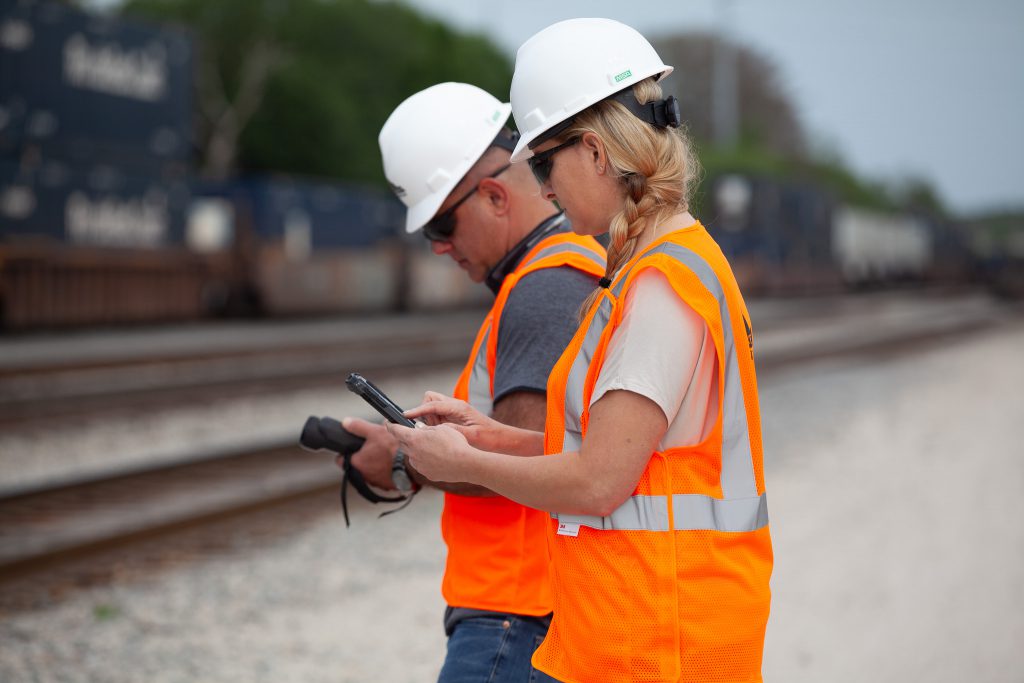
Certain terminal environments use cellular and broadband networking that isn’t universally compatible with all tablets and handheld devices. Older, more affordable tablets and hand-helds, for example, may not be compatible with 5G wireless frequencies, which some terminals may require.
Many terminals connected to the FirstNet public safety broadband network may also want all newly acquired mobile devices to be FirstNet compatible, further reducing the available inventory that meets the facility’s requirements. When this compatibility is non-negotiable, Buckeye Mountain’s experts simplify the procurement process by automatically weeding out any devices that don’t fit the bill.
Excessive Repair and Maintenance Costs
Extreme weather, heavy machinery and the rigors of outdoor industrial environments all increase the need for ongoing device repair and maintenance. But investments into rugged devices designed to withstand this regular wear and tear can reduce repair and maintenance costs, extending device lifespans and reducing the total cost of ownership for your hardware.
On-going Device Management
Optimal hand-held performance is dependent on continual device management to implement software updates, monitor device health, and troubleshoot issues that may arise. Remote device management can be instrumental in minimizing disruptions to terminal operations, allowing certain management activities to be executed without removing devices from the field.
Device Downtime
When mobile devices are integral to terminal operations, unplanned device downtime can slow or completely halt certain field operations. These disruptions can have a ripple effect across your terminal, creating bottlenecks and other slowdowns that reduce throughput and frustrate your customers.
Failure to deploy rugged hand-held devices across your field operations only increases the risk of incidents that result in unplanned downtime—resulting in material costs that extend far beyond the repair or replacement of that device.
Five ways the ‘Buckeye Difference’ Differs from Traditional Device Procurement

When terminal leaders approach device manufacturers in search of new hand-held solutions, most of those manufacturers will quickly recommend certain products they’re trying to sell—regardless of whether those devices are a good fit for the customer’s needs. As a result, terminals risk procuring mobile devices that aren’t suited to their outdoor environment, intended use case, or other requirements.
But Buckeye Mountain isn’t trying to sell your terminal products we’ve already manufactured. Instead, our experts are solely focused on making sure you invest in hand-held devices that are best suited to your terminal’s unique needs.
“We’re not going to try to fit a round object into a square hole, as so many manufacturers do,” says Hunter. “It doesn’t matter if the right technology comes from Panasonic, Honeywell, Zebra, or a different manufacturer. We cast a wide net to find the technology that fits.”
Matt Hunter, Principal of Sales and Operations
Here are five key ways Buckeye’s approach differs from traditional device procurement:
1. Tailoring solutions to specific use cases
Tablets and other hand-held devices are used across a wide range of terminal operations, including intermodal check-in, interactive kiosks, and mobile data units. Different terminals must also account for environmental factors such as wireless networking compatibility, extreme temperatures, heavy rain, and other outdoor conditions.
Rugged mobile devices are available to serve all of these specialized needs—and Buckeye Mountain’s experts have the industry expertise needed to ensure a successful deployment.
“Customers approach us all the time saying, ‘This is what we’re trying to do,’ says Hunter. “They might be trying to solve a problem at their gates, or they need a kiosk where the drivers can interact. And we’re able to say, ‘Oh, we just set this up for a different terminal. We’ve already solved your problem—here’s what it looks like.’”
Matt Hunter, Principal of Sales and Operations
2. Investing in Best-of-Breed Tech
Terminal operations run better when environments are built from a best-of-breed approach, ensuring that specialized use cases are supported by the best-fit specialized solutions on the market.
But for terminals managing technology procurement in-house, a best-of-breed approach is also far more resource-intensive. Each new technology acquisition can involve narrowing a field of hundreds of potential devices to a single, best-fit solution.
Buckeye Mountain’s experts have dealt with devices from more than 450 different manufacturers over the years—and that deep industry knowledge allows them to quickly identify the mobile devices best suited to a customer’s specific use case.
“For example, when a customer says they want to look at best-of-breed hand-helds that are 5G and FirstNet compatible, we find the devices that meet those requirements and toss out the rest,” says Hunter. “We use our expertise to make things simple for the customer. Otherwise, they’re going to get overwhelmed.”
3. Providing Comprehensive Device Management and Support
Buckeye Mountain’s commitment to customer success spans the full mobile device lifecycle. After we’ve helped you identify and deploy the best-fit mobile solutions for your terminal, we provide ongoing remote device management and support to optimize device performance, assist in troubleshooting, and minimize device downtime that can disrupt your operations.
Our continued support is designed to maximize the overall return on your mobile device investment through improved operational performance and extended device lifespans. We don’t measure success by the number of devices sold—we measure it by the value we deliver for your terminal.
4. A Strategic Framework to Maximize the Value of your Device Investment
Any investment into rugged hand-held devices should be supported by a strategic framework that clearly defines the intended business outcomes, lifecycle support strategies, and long-term value generation associated with that technology acquisition.
Procurement teams and field operations leaders must work together to ensure alignment on these goals and agree on the best approach for managing implementation and ongoing support for those assets.
This strategic planning is central to what Buckeye Mountain offers your terminal. Instead of selling your hardware without any ongoing partnership and support, we work with each terminal’s operations and IT professionals to set up plans and procedures concerning preventative maintenance, tech support, planned downtime, and other scenarios each facility will encounter across the lifespan of your hand-held devices.
5. Unrivaled Asset Management Expertise
Poor, inconsistent asset management practices can increase the occurrence of preventable repairs, resulting in more frequent operational delays and reduced device lifespans. For product manufacturers, lackluster asset management creates an opportunity to sell a new generation of hand-held devices to your terminal.
But because Buckeye Mountain prioritizes long-term value creation, we offer “boots-on-the-ground” support for asset management that controls your ongoing device management costs and maximizes your ROI across the full device lifecycle.
“Customers who move away from our ‘boots-on-the-ground’ approach quickly realize they lose a lot of asset management expertise that Buckeye Mountain brings to the table. We do things beyond scope to ensure our customers are taken care of—and we have an internal structure for managing assets that other companies can’t match.”
David Fajardo, Manager of Field Technical Services
Don’t buy Mobile Devices: Invest in Long-term Value Creation

Vendors that push certain hand-held devices and brands aren’t acting in your terminal’s best interest. You need a procurement partner you can trust—an expert hardware vendor who uses your unique requirements and goals to single out the best-fit solutions for your specific use case.
That’s what Buckeye Mountain does for its customers. We’re willing to comb through hundreds of different hand-held device options in search of the technology that offers exactly what your terminal needs—and then we continue to add value through ongoing support across the full device lifecycle.
We use our expertise to make the procurement process easier for your business, ensuring that your mobile device purchase is an investment that’s going to pay dividends for your on-the-ground operations.
See for yourself how Buckeye Mountain can streamline procurement and elevate business outcomes for all of your technology acquisitions.

